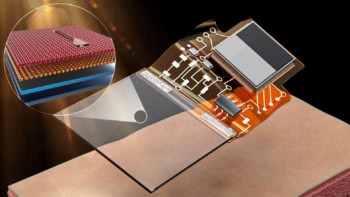A new form of nitrogen that behaves as a semiconductor could be a future source of energy, according to Russell Hemley and colleagues of the Carnegie Institution of Washington in the US. The group compressed nitrogen gas to create the 'non-molecular' nitrogen - an opaque solid that releases a flood of energy when it reverts to its well-known diatomic form (M Eremets et al 2001 Nature 411 170).
Ordinary nitrogen gas – an insulator – is abundant in the atmosphere and the robust triple bonds that pair the atoms in each molecule are well understood. But in 1985 theorists predicted that, at a pressure between 50 and 94 GPa, this arrangement would be replaced by a non-molecular structure in which each nitrogen atom forges three single bonds with neighbouring atoms.
After creating this polymer-like substance, Hemley’s team measured its electrical resistance under various temperatures and pressures. When the pressure rose to 140 GPa – around a million times atmospheric pressure – and the temperature reached 300 K, the material became a solid semiconductor.
The team then reduced the pressure on different samples at a variety of temperatures. Remarkably, they found that the semiconducting state persisted at normal atmospheric pressure at temperatures below 100 K. A pronounced hysteresis effect arises because the change in phase lags behind the change in pressure.
When non-molecular nitrogen transforms into ordinary nitrogen gas, an enormous amount of energy is released from its chemical bonds. The triple bond in molecular nitrogen contains around six times more energy than a single bond in non-molecular nitrogen, but the high density of the new material makes it an extremely dense storage medium for energy. Since the new material is stable at normal pressures, Hemley’s team is optimistic that this feature could be exploited.
“We have only created very small amounts of the material so far, and only at low temperatures”, Hemley told PhysicsWeb. “But the material has a very high energy density and could be used as a fuel eventually.”



